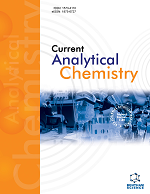
Full text loading...
Milk, an essential part of diet is comprised of all indispensable nutrients. However, it proves to be beneficial only if it is available in its pure form.
The current study aimed to evaluate packaged milk samples collected from local markets of Karachi and to assess level of consumer awareness about health risks associated with substandard milk consumption.
Packaged milk samples were assessed collectively for physical parameters, and microbial load. Seventeen colour-based chemical tests were also conducted to detect different dyes, preservatives, and other added chemicals as adulterants in milk. A household-based community survey was conducted to evaluate consumer’s preferences regarding packaged milk consumption.
97% of tested milk samples were observed to have added solids and water in them. Chemical adulterants in tetra packaged milk were detected in order of Glucose > Cane sugar, Vegetable fat > Formalin, >Artificial colour > Neutralizer > Detergent >Urea, Annatto dye > Starch. For the household-based survey, a total of 266 respondents were interviewed. Although 61.7% of respondents preferred pasteurized milk, potential customer satisfaction with the quality of pasteurized milk was 74.4%. Multivariate analysis showed that customer satisfaction regarding pasteurized milk was significantly associated with the preference of customer [Odds Ratio (OR)=4.18, p=0.004], buying factors like price, offers, and discounts (OR=6.92, p=0.014), quality and availability (OR=4.81, p=0.003), and experienced negative health effects (OR=0.26, p=0.002).
The study concluded that more than 70% of the packaged milk samples were adulterated with detergents, artificial flavors and glucose which signify the compromised quality of the packaged milk and their products. Strict regular quality checks should be established and closely monitored by regulatory authorities and the government.

Article metrics loading...

Full text loading...
References


Data & Media loading...

